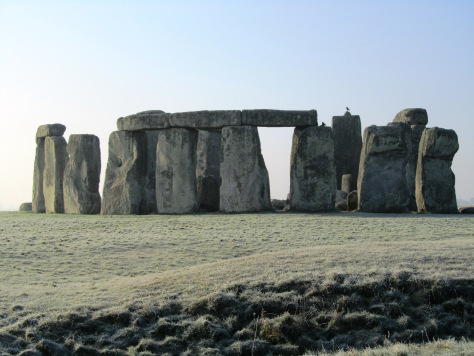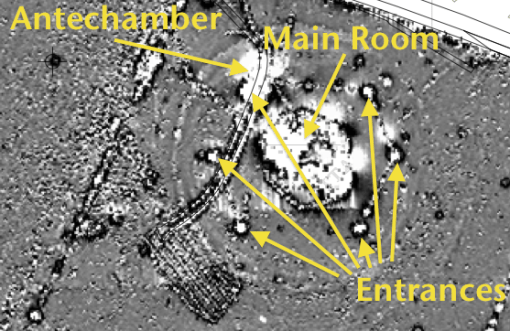SUN-seekers will be alarmed to know that the summer solstice is just around the corner. The pagan celebration falls in June every year.
Even though the midsummer date is when we get the most daylight of the year, it also marks the time where the days start shortening ahead of winter.

The summer solstice is considered to be the longest day of the year because it’s when we get the most daylight. Getty Images
Here’s everything you need to know about summer solstice 2021…
When is the summer solstice?
The midsummer date is set based on the planet’s rotational axis.
It’s decided based on the sun’s tilt towards the sun, which hits its maximum at 23° 26′ and falls between June 20 and June 22 in the northern hemisphere.
This year, the summer solstice will take place on Wednesday, June 21st

The date is decided based on the angle of the Earth’s tilt. Getty Images
What is the summer solstice?
The ‘longest’ day of the year marks the middle of summer.
This is because the tilt of the Earth’s axis is most aligned with the sun, providing us with the most daylight of the year.
After June 21, the nights will began to close in as our planet rotates away from the sun.
The date where Earth is the furthest from the star is marked by the winter solstice.
What’s the summer solstice got to do with Stonehenge?
The day is celebrated by pagans and druids, with rituals of rebirth performed throughout history on the day.
One of the biggest celebrations in the UK occurs at Stonehenge with crowds gathering to watch the sunrise.
The tradition sees revellers waiting by the Wiltshire monument on midsummer, facing towards the north-easterly direction.
Crowds of devotees, often dressed for the occasion, regularly gather to watch the moment the sun rises above the Heel Stone.
It’s just one of the many pagan festivals, which include midwinter and imbolc – the day that traditionally marks the start of spring.

Revellers face the sun as they watch it rise up around the Wiltshire monument
How else is the summer solstice celebrated?Midsummer festivities are held across the world in many different cultures.
In many cases, the rituals are linked with themes of religion or fertility.
Wianki celebrations in Poland are similar to those held in Britain, as the day is largely considered a pagan religious event.
There are different traditions across Europe, with Estonia using the day to mark a shift in agricultural patterns.
In Russia and Ukraine, it’s tradition for revellers to jump over bonfires to test their courage and religious faith.
Article source: By Sophie Roberts The Sun News
Cross it off your bucket list this year and join our Stonehenge Summer Solstice Tour. Guided tours with luxury transport depart from Bath and London on 20th and 21st for sunset and sunrise.
Stonehenge Guided Tours
The Stonehenge Experts
Established 1995
Stonehenge – a name that evokes a great many emotions in a great many people. For some it is a place of pilgrimage, a place to connect with the ancestors and for others it is seen as a tourist trap or something to tick off the bucket list. For centuries it has captured our imagination; never has a heritage site been so controversial – something which continues to this day. In this post it is not my intention to give a full on thesis about Stonehenge, there are plenty of books/websites who do this already. Instead it is simply an overview of what is currently understood about the site, its surrounding landscape and my own personal thoughts.

Stonehenge is situated on the Salisbury Plains, to the south is the busy A303, a main road between the south-west and London, and for many years the equally busy A344 ran alongside the site. This latter road was removed sometime ago to improve the visitors experience. Today there are ongoing discussions regarding the upgrading of the A303 and a proposed tunnel. It is a highly emotive subject, on one hand I understand the need to improve the road situation (ask anyone who is stuck in a traffic jam on the A303) but as an archaeologist I am also aware of the sensitive nature of the surrounding heritage landscape (and yes I am on the fence). Mike Pitts in his recent post discusses the pros and cons for those of you who are interested.
For the visitor today the focus is on the large stone circle with its trilithons, they marvel at how it could have been built by ‘primitive man’ often leading to suggestions of alien intervention and lost technologies. But such thoughts only serve to belittle our ancestors and our past. Others may ask why did our ancestors build Stonehenge? Often the answers are unimaginative and simple – sun-worship; display of power; ancient computer; druid temple – once more when we look only for one answer to a what is obviously a complicated site of great longevity we belittle their achievements. Instead if Stonehenge was understood in terms of the wider landscape and as a site whose history spanned several millenia we might come to some small understanding of how and why.
In today’s world of instant gratification where everything has a beginning and an end, it is hard to imagine beginning a project knowing you might not see it finished but this was a reality for the builders of Stonehenge. It has lead some to suggest that it was not the end product which was important but the doing, the act of building which was in fact the purpose. Suggesting a cyclical thought pattern which can be seen in other aspects of prehistoric life – round houses, stone circles, round barrows. in addition, time itself was most likely viewed in cycles, the phases of the moon and the movement of the seasons are all cyclical events which would have been of great importance to prehistoric people trying to make sense of their world.
“So was Stonehenge ever ‘finished’? The answer to that has to be no, because completion was never the intention of the people who created it.” (Pryor F. 2016 ‘Stonehenge: The Story of a Sacred Landscape).
It is well known that Stonehenge itself had many incarnations, perhaps meaning new and different things with each alteration or rebuild. To understand Stonehenge it is important to consider it in the wider context of the surrounding landscape (there are literally hundreds of prehistoric monuments around it) in all the different phases.
The Mesolithic Story
The story of the Stonehenge landscape begins back in the Mesolithic, ongoing recent excavations at Blickmead are providing archaeologists with tantalising clues as to why this area was important to our ancestors. The site is situated near a spring by the River Avon, excavations began in 2005 and almost immediately were fruitful. Basically, the deposits consisted of an array of Mesolithic settlement debris, mostly flint fragments (tens of thousands) but also a great number of animal bones. Interestingly, the site also yielded the largest collection of auroch bones ever found on a Mesolithic site in Britain so far. Other animals which were hunted and consumed included red deer, wild boar and salmon – this has led archaeologists to suggest that feasting was a common occurence around the spring. The spring itself is quite unusual as it has the tendency to stain flints and other materials a bright magenta pink – the importance of springs in later prehistory is well attested to.
In 1966 row of four large pit like features were found during upgrades to the old carpark close by Stonehenge. When excavated one was found to be a the root-hole of a tree and the other three were holes dugs to hold large poles. Examination of the material from these features gave a date range from between 8500 and 7000BC. The posts would have been approximately 75cm in diameter and were from pine trees. Later in 1988 another post-hole was discovered south and east of the original pits but it was contemporary.
So here we have a landscape already well populated by hunter-gatherer communities who revered certain natural features long before Stonehenge makes an appearance. A landscape which had meaning to the people who inhabit it; who had traditions and memories of place.
At around 3500BC (Neolithic) with the arrival of farming these communities and their traditions had evolved and more permenant features began to make an appearance on the landscape. Long barrows such as those at East and West Kennet or Winterbourne Stoke were the first to appear and by 3400BC the Stonehenge Cursus and Lesser Cursus was under construction.
3000BC – The first official phase of construction
In many parts of Britian at this time a new type of monument was being constructed, these were earthwork enclosures which are referred to as henges. They consist of irregular cut ditches encircling a defined area with corresponding banks. Stonehenge’s earliest phase was one such earthwork. Here there were two entrances one faced north-east and the other faced south. The north-easterly entrance remained in use for much of the sites lifetime and appears to be important to its function. The entrance is aligned along a line of natural gullies which face towards the midsummer sunrise in one direction and the midwinter sunset in the other.
These natural gullies would have been visible to the people of the Mesolithic and may have been why the large pine posts were erected where they were – the midsummer and midwinter solstices were just as important then as they were to the later prehistoric communities.
Inside the earthwork enclosure around the inner edge of the bank were fifty-six regularly spaced pits – these are now known as the Aubrey Holes. There is some discussion as to what they were or what they contained – small stone uprights or wooden posts? However, what is known is that eventually they did contain cremated human remains. Similar deposits have been found in the partly filled ditch and cut into the bank suggesting that at this stage in its history Stonehenge was used as a cemetary, among other things.
Read the full story (article source) here: Toni-maree Rowe – Write
Further Reading
Pryor F (2016) Stonehenge: The Story of a Sacred Landscape
Parker-Pearson M et al (2015) Stonehenge: Making Sense of Prehistoric Mystery
Parker Pearson M (2013) Stonehenge: Exploring the Greatest Stone Age Mystery
Bowden M et al (2015) The Stonehenge Landscape: Analysing the Stonehenge World Heritage Site.
Join s on a Stonehenge guided tour and hear all the latest theories.
Stonehenge Guided Tours (est. 1995)
http://www.StonehengeTours.com
The Stonehenge Experts








